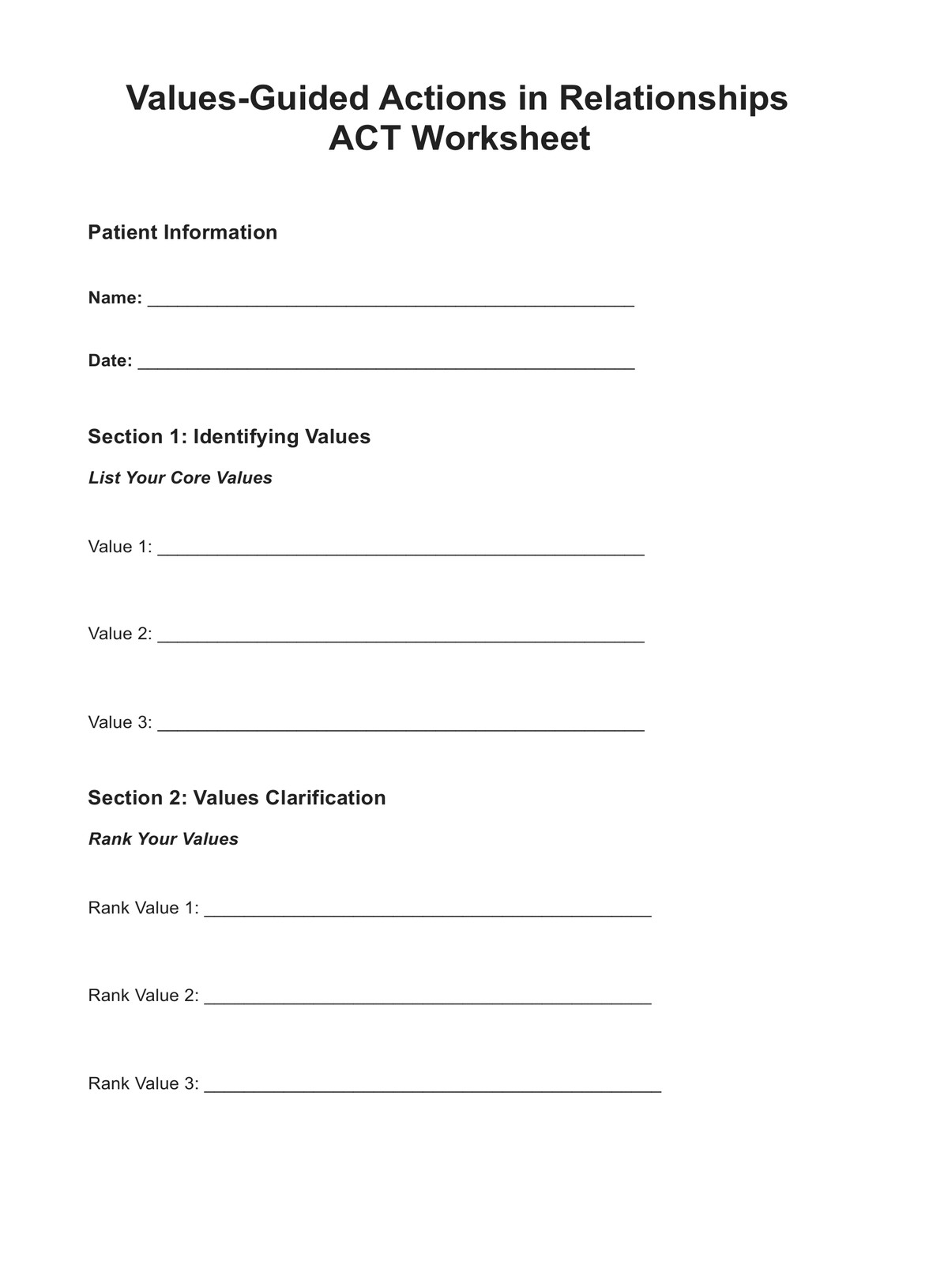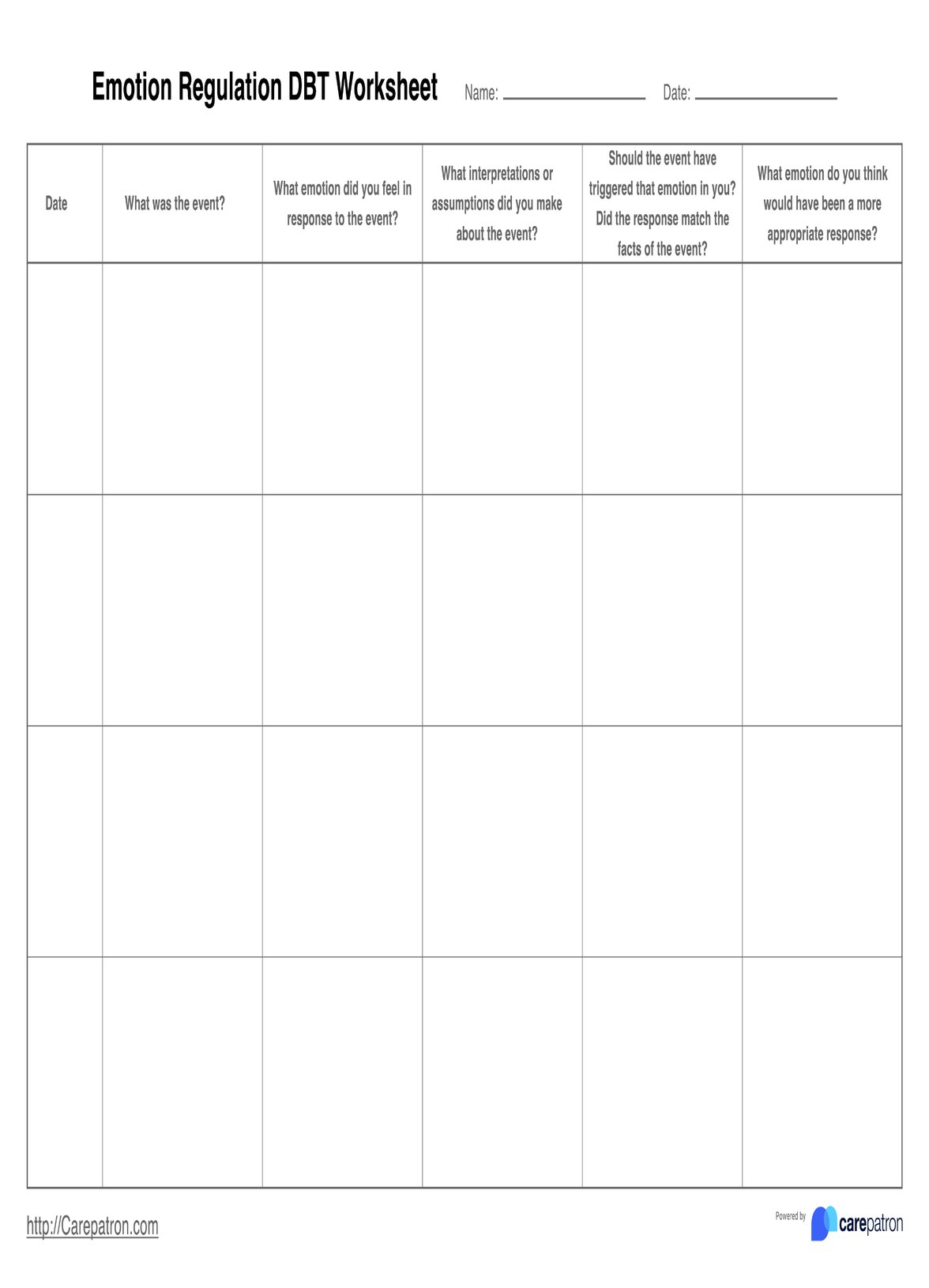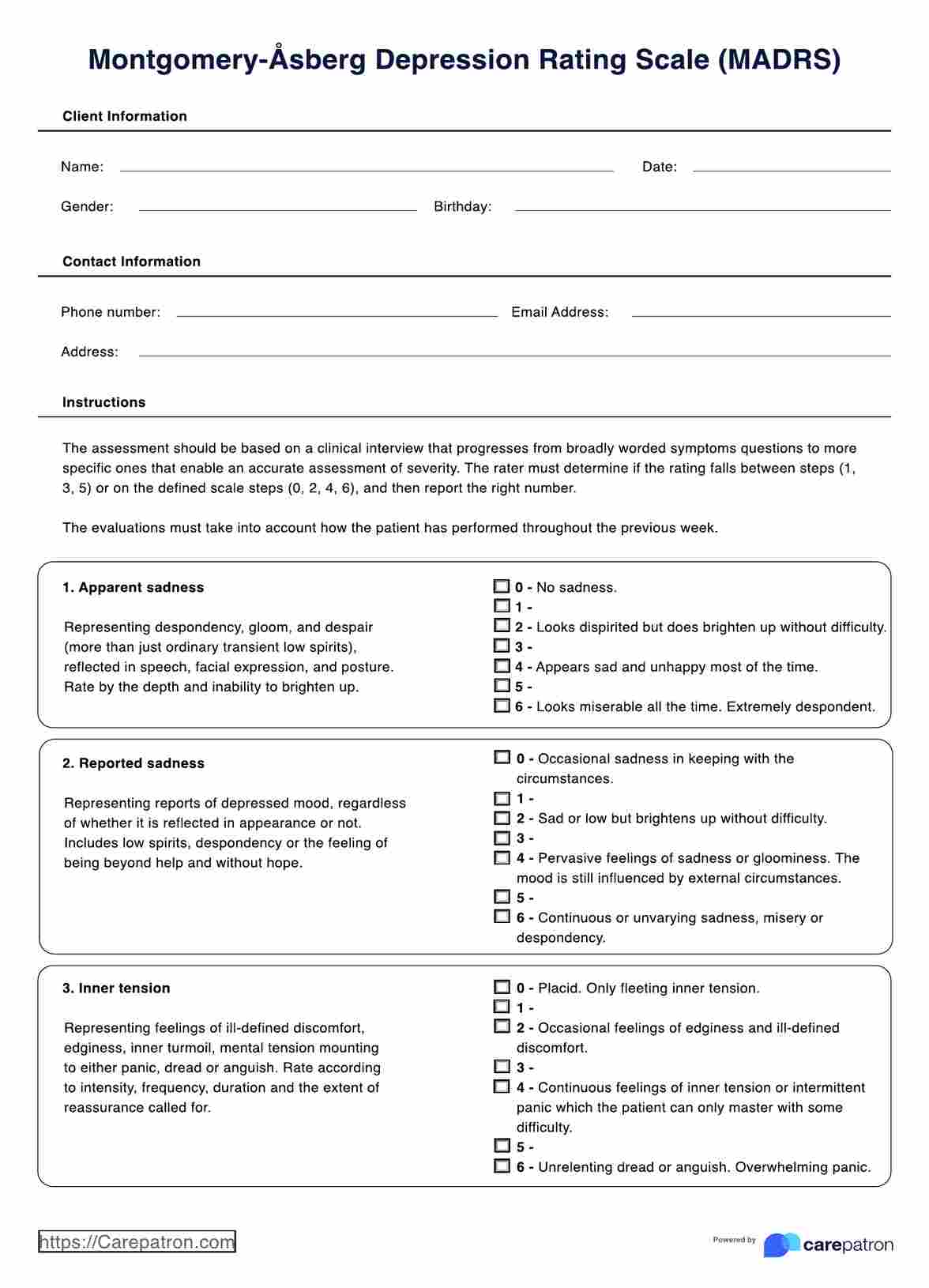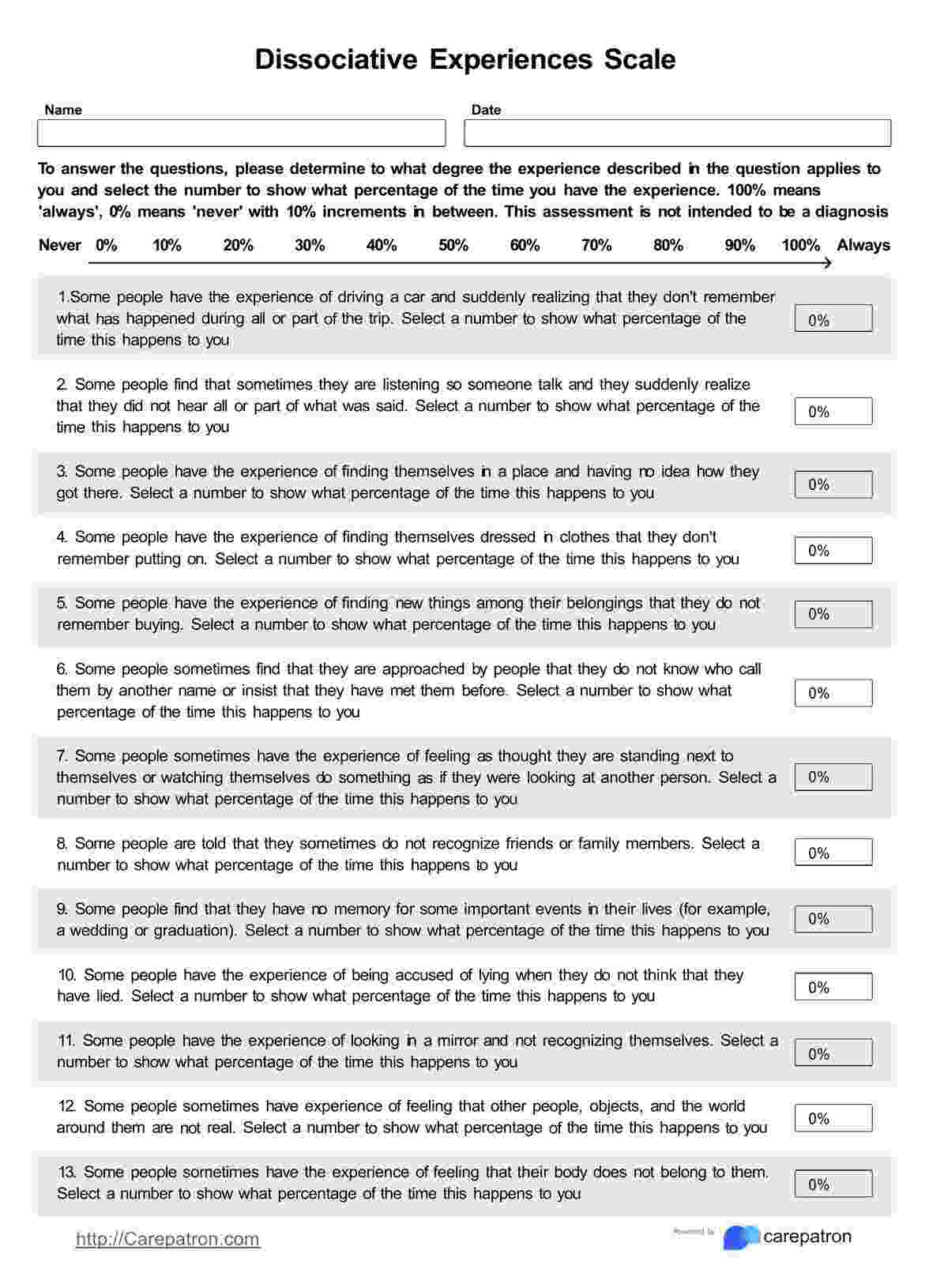Recognizing Negative Feelings and Thoughts ACT Worksheet
Enhance emotional awareness with the Recognizing Negative Feelings and Thoughts ACT Worksheet, a valuable tool for mental health support in healthcare.


What is Acceptance and Commitment Therapy?
is a profound therapeutic approach with great potential in aiding individuals, particularly those with anxiety, to foster psychological flexibility and lead a more fulfilling life. Healthcare practitioners benefit significantly from understanding the core principles of ACT, particularly its emphasis on recognizing negative feelings and thoughts, as it can serve as a potent tool in their arsenal to help clients overcome anxiety-related challenges.
At its essence, ACT is built upon the foundation of mindfulness and acceptance, coupled with behavioral change strategies. Rather than attempting to eliminate or suppress negative feelings and thoughts, ACT encourages individuals to acknowledge and embrace them as natural components of the human experience. This principle, deeply resonant with mindfulness practices, enables clients to establish a healthier relationship with their emotional landscape, thereby curbing the intensification of their distress.
In the context of anxiety, ACT offers a transformative approach. By recognizing negative feelings and thoughts associated with stress, clients become adept at defusing themselves from these distressing mental states. ACT doesn't seek to invalidate or challenge these emotions, but rather, it guides clients to perceive them as fleeting cognitive events rather than immutable truths. This shift allows individuals to cultivate resilience, navigate stressors, and progressively loosen the grip of anxiety on their lives.
Practitioners can use ACT to guide clients through a structured process of identifying automatic thoughts and emotions tied to anxiety-provoking situations. Using techniques like cognitive defusion, clients visualize these thoughts as transient objects, diminishing their power over their emotional well-being. This process fosters a mental distance, empowering clients to respond to anxiety-driven thoughts with greater clarity and objectivity.
Furthermore, ACT assists clients in connecting with their core values and committing to action that aligns with them despite anxiety. This commitment-based approach fosters courage and empowers clients to take steps toward their goals, regardless of negative emotions. The willingness to experience anxiety as part of the journey, rather than an impediment, becomes a cornerstone of the therapeutic process.
Acceptance and Commitment Therapy is a formidable approach for healthcare practitioners to employ in aiding clients facing anxiety. By recognizing negative feelings and thoughts as fleeting experiences and cultivating psychological flexibility, clients can emerge from anxiety and lead more meaningful lives. Practitioners who integrate ACT principles into their therapeutic toolkit can empower their clients to navigate the complex landscape of anxiety with resilience, self-compassion, and unwavering commitment to personal growth and well-being.
Recognizing Negative Feelings and Thoughts ACT Worksheet Template
Recognizing Negative Feelings and Thoughts ACT Worksheet Example
How to use the Recognizing Negative Feelings and Thoughts ACT Worksheet:
The Recognizing Negative Feelings and Thoughts ACT Worksheet is a powerful tool rooted in Acceptance and Commitment Therapy (ACT) designed to help individuals, under the guidance of healthcare practitioners, gain insight into their negative emotions and thoughts. This process empowers them to develop healthier responses to these inner experiences, especially when dealing with anxiety or other challenging emotions.
Here is how to effectively use this worksheet:
Step 1: Introduction to the Worksheet
Begin by introducing the Recognizing Negative Feelings and Thoughts ACT Worksheet to the client. Emphasize that its purpose is not to eliminate negative thoughts and feelings but to build a more constructive relationship with them. Explain that this worksheet is a means to develop psychological flexibility and align actions with personal values.
Step 2: Identifying Negative Feelings and Thoughts (Part 1)
In this step, clients are guided to reflect on a recent situation where they experienced negative emotions such as anxiety, stress, or sadness. They list these emotions and the automatic thoughts associated with the situation.
Step 3: Practicing Cognitive Defusion (Part 2)
Next, clients choose one of the identified automatic thoughts and visualize it as an object passing by, distancing themselves from it emotionally. This technique, known as cognitive defusion, helps clients reduce the emotional intensity of their thoughts.
Step 4: Connecting with Values (Part 3)
In this step, clients are encouraged to reflect on their core values. They identify what truly matters to them, whether personal growth, courage, authenticity, or other values.
Step 5: Willingness to Experience (Part 4)
Clients then acknowledge their willingness to experience negative feelings and thoughts while still striving to align their actions with their identified values. This is a critical step in ACT therapy, promoting acceptance of emotions rather than avoidance.
Step 6: Action Commitment (Part 5)
In the final step, clients determine specific actions they can take that align with their values, even in the presence of negative emotions. These actions empower clients to move forward despite challenging inner experiences.
Step 7: Revisiting and Progress
Explain to the client that they can revisit this worksheet whenever they encounter challenging emotions. Progress in recognizing and managing negative feelings and thoughts may take time, but by consistently applying the principles of ACT outlined in this worksheet, clients can develop greater resilience, emotional regulation, and overall well-being.
When would you use this Recognizing Negative Feelings and Thoughts ACT Worksheet?
The Recognizing Negative Feelings and Thoughts ACT Worksheet is a valuable resource in the toolkit of various healthcare professionals, including psychologists, therapists, counselors, and social workers. Its primary purpose is to assist individuals in developing a healthier relationship with their negative emotions and thoughts, making it relevant in numerous scenarios:
Anxiety Management
This worksheet is handy when individuals are dealing with heightened anxiety. Healthcare professionals can employ it to help clients identify the specific triggers, emotions, and automatic thoughts contributing to their anxiety. By recognizing these negative feelings and thoughts, clients can learn to manage them more effectively.
Stress Reduction
In high-stress situations, such as work-related stress or significant life changes, this worksheet can help individuals pinpoint stressors, understand their emotional responses, and develop coping strategies that align with their values.
Depression Treatment
Healthcare practitioners working with individuals experiencing depression can use this tool to assist clients in recognizing negative thought patterns and emotions contributing to their depressive symptoms. By fostering awareness, clients can work towards a more positive mindset.
Personal Growth and Development
Even in non-clinical settings, life coaches and personal development professionals can utilize this worksheet to help clients gain insight into their thought processes, promoting self-awareness and personal growth.
Relationship Counseling
This worksheet can facilitate open discussions about negative emotions and thoughts within relationships in couples or family therapy. It can help individuals express their feelings and foster empathy and understanding among family members or partners.
General Self-Reflection
Beyond clinical contexts, anyone seeking self-improvement can use this worksheet independently. It offers a structured approach to self-reflection, encouraging individuals to recognize their inner experiences and make intentional choices aligned with their values.
What are the benefits of using this Recognizing Negative Feelings and Thoughts ACT Worksheet?
The free Recognizing Negative Feelings and Thoughts ACT Worksheet offers a range of significant benefits for both individuals and healthcare professionals:
Enhanced Emotional Awareness
This worksheet encourages individuals to identify and acknowledge their negative emotions and automatic thoughts. By doing so, they develop a heightened sense of emotional awareness, which is crucial for emotional regulation.
Reduced Anxiety and Stress
Individuals learn to detach from distressing thoughts through the cognitive defusion technique, reducing their anxiety and stress. This empowers them to confront these emotions more effectively.
Alignment with Values
The worksheet helps clients connect with their core values and commit to actions aligning with them. This process promotes a sense of purpose and direction, contributing to overall well-being.
Improved Resilience
This worksheet builds emotional resilience by fostering the willingness to experience negative emotions while pursuing valued actions. Clients learn that they can face adversity without being overwhelmed by it.
Empowerment in Decision-Making
Recognizing and defusing negative thoughts can lead to more transparent, more objective decision-making. Individuals become less influenced by their emotional reactivity when making important life choices.
Personal Growth and Well-Being
Ultimately, this worksheet supports personal growth and a sense of well-being. It equips individuals with the tools to navigate challenging inner experiences and move towards a more meaningful and fulfilling life.
ACT was developed in the 1980s by Dr. Steven C. Hayes and his colleagues. Over the years, it gained prominence in the psychological community for its unique approach to addressing psychological distress, emphasizing acceptance, mindfulness, and values-driven action.
Numerous meta-analyses conducted between 2018 and 2021 have consistently demonstrated the effectiveness of ACT in treating various mental health conditions. These include studies on anxiety disorders, depression, chronic pain, substance abuse, and more (APA Citation: A-Tjak et al., 2018; Ong et al., 2018).
The core components of ACT, such as cognitive defusion, have been the subject of research examining their impact on reducing the emotional impact of distressing thoughts and emotions. This research provides the theoretical foundation for exercises like those in the Recognizing Negative Feelings and Thoughts ACT Worksheet (APA Citation: Öst, 2018).
ACT focuses on developing psychological flexibility, an extensively studied construct during this period. Research has shown that psychological flexibility is associated with better mental health outcomes, increased well-being, and greater life satisfaction (APA Citation: Gloster et al., 2019).
While there may not be specific citations for the Recognizing Negative Feelings and Thoughts ACT Worksheet, its content aligns with the well-established principles of ACT, which have been substantiated by a wealth of research conducted within the specified timeframe. This empirical foundation underscores the worksheet's credibility and its potential to facilitate therapeutic progress for individuals working to manage negative emotions and thoughts effectively.
References:
A-Tjak, J. G. L., Davis, M. L., Morina, N., Powers, M. B., Smits, J. A. J., & Emmelkamp, P. M. G. (2018). A meta-analysis of the efficacy of acceptance and commitment therapy for clinically relevant mental and physical health problems. Psychotherapy and Psychosomatics, 87(4), 240-246.
Ong, C. W., Lee, E. B., & Twohig, M. P. (2018). A meta-analysis of dropout rates in acceptance and commitment therapy. Behavior Therapy, 49(4), 514-535.
Öst, L. G. (2018). The efficacy of acceptance and commitment therapy: An updated systematic review and meta-analysis. Behaviour Research and Therapy, 111, 58-72.
Gloster, A. T., Meyer, A. H., & Lieb, R. (2019). Psychological flexibility as a malleable public health target: Evidence from a representative sample. Journal of Contextual Behavioral Science, 12, 158-165.
Commonly asked questions
This worksheet aids individuals in recognizing their anxiety-related thoughts and emotions, allowing them to develop a healthier relationship with them. Cognitive defusion and values-based commitment empower individuals to confront and manage anxiety while taking action aligned with their values.
This worksheet suits healthcare practitioners, therapists, counselors, and individuals seeking self-improvement. It's versatile and can be adapted for various therapeutic and personal development contexts.
While it's a valuable tool, this worksheet is best used as part of a comprehensive therapeutic approach. It can complement other therapeutic modalities and strategies to effectively address anxiety or other mental health concerns.
The frequency of revisiting the worksheet varies from person to person. Individuals can use it as needed, particularly when encountering challenging emotions or thoughts. It's a flexible tool meant to support ongoing self-awareness and growth.


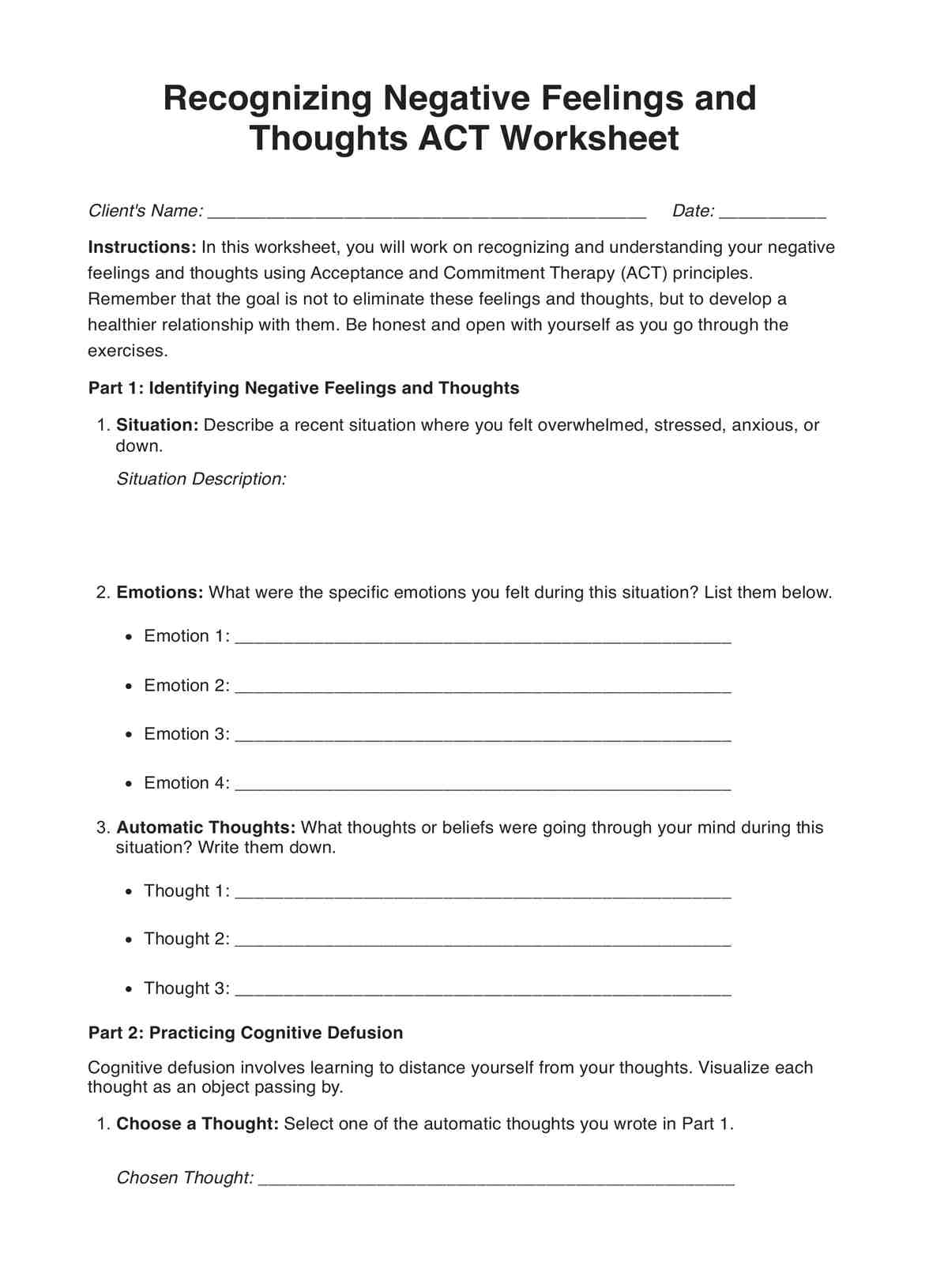
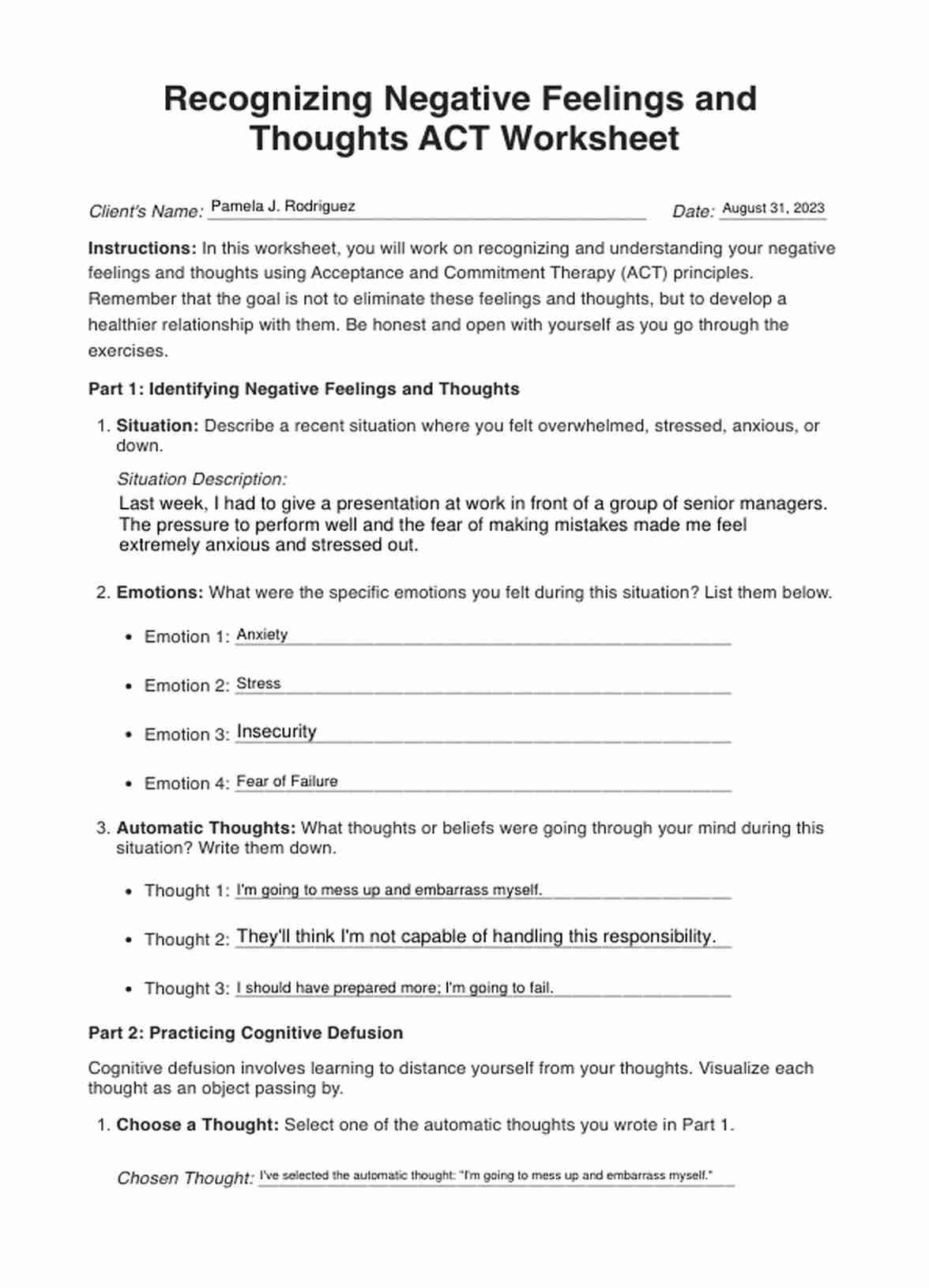















-template.jpg)




























































































